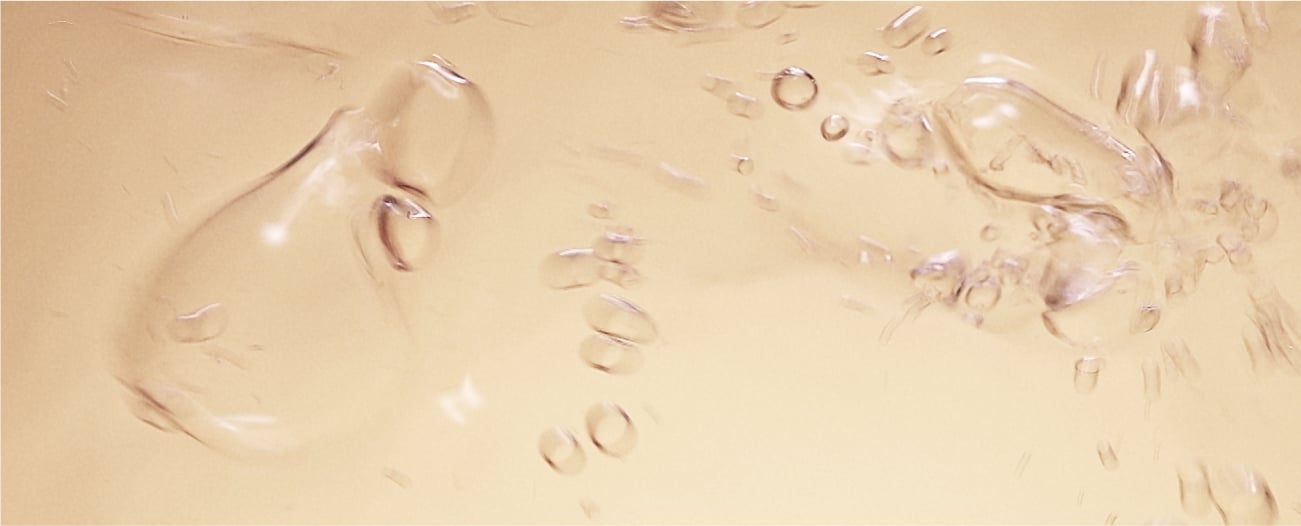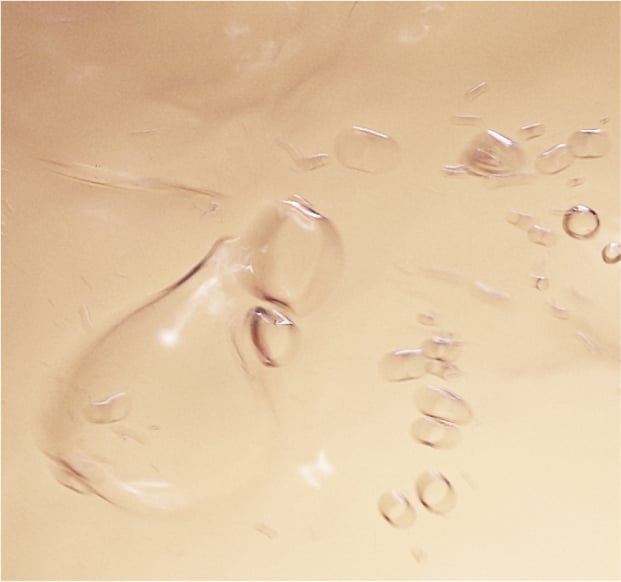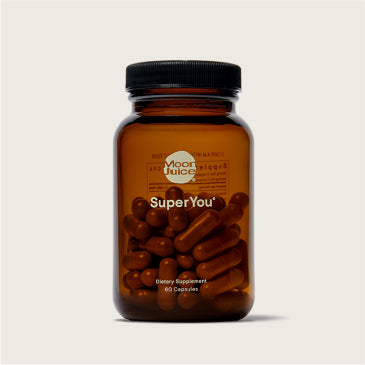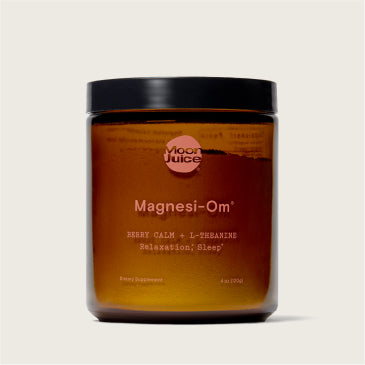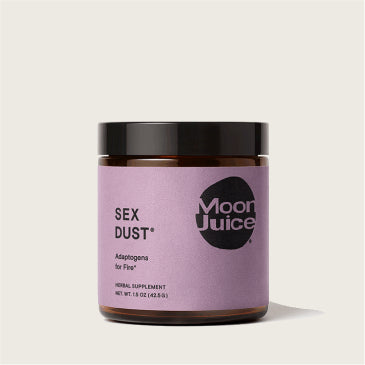Unlike physical exfoliants that use gritty ingredients to slough away flaky skin, chemical exfoliants like AHAs and BHAs (Alpha Hydroxy Acids and Beta Hydroxy Acids) loosen up dead skin cells and clean out debris from deep inside pores. While both AHAs and BHAs are useful for achieving a clear complexion, AHAs and BHAs have different properties and target different skin care needs. Many people use a blend of both acids regularly to reap all the benefits in one well-rounded regimen. What's the difference between aha vs bha? We're breaking it down below!
So what are AHAs and BHAs actually doing for your face? Without the use of abrasive agents, these acids unsettle and clear away flakes and soften rough patches. Their pore minimizing effect can improve the look of pores, while their humectant powers help bind hydration into the skin. As if that weren’t enough, they help boost cell turnover and stimulate collagen production.
Without the use of abrasive agents, BHAs and AHAs unsettle and clear away flakes and soften rough patches.
Whether you’re using AHAs and BHAs as a spot treatment or everyday acid, there are some things you should know about the differences between them and how to incorporate these skin heroes into your routine.
What is AHA?
AHA, or Alpha Hydroxy Acid, is a chemical exfoliant compound that is commonly derived from sugar cane and other plant sources like fruits. On cosmetic labels, you might know it as Glycolic Acid, Lactic Acid, Citric Acid, Hydroxycaprylic Acid, or Hydroxycapric Acid.
By stimulating collagen synthesis in your fibroblasts, or the skin cells that make collagen, AHAs help promote collagen production when used regularly. Glycolic Acid, for instance, penetrates deep into the skin to support collagen creation, keeping skin bouncy and elastic. They also help exfoliate the skin by gently breaking the bonds between dead cells, which allows the old skin cells to shed and new skin cells to surface.
AHA exfoliants benefit both the outer epidermis and the deeper dermis of the skin, helping decrease skin degradation, minimize fine lines and wrinkles, and reduce visible indicators of sun damage.
What is BHA?
BHA, or Beta Hydroxy Acid, is an oil-soluble acid that helps fight bacteria and unclog pores, especially in acne prone skin. If you’ve ever used an acne product, you’re probably familiar with BHA exfoliants in the form of Salicylic Acid, which is used to treat skin prone to bumps and blemishes. Because Salicylic Acid is fat-soluble, it’s able to penetrate deep inside pores, but it’s gentle enough to use on sensitive skin due to its large molecule size and anti-inflammatory properties in low concentrations.
What’s the difference between AHA vs. BHA?
Structurally speaking, AHAs and BHAs are chemically very similar, but they differ in the position of one hydroxyl group (a chemical group with one oxygen atom covalently bonded to one hydrogen atom).
AHAs are water soluble, meaning that they exfoliate the surface layer of your skin. They’re great at reducing sun damage and fine lines. With their ability to improve moisture within skin, AHAs are a great choice if you have normal to dry or sun-damaged skin or dark spots.
BHAs are oil soluble, meaning they work on the surface of the skin and go further to work deep inside the pore. They’re a multipurpose ingredient great for tackling multiple skin concerts. If you have normal to oily skin or are prone to clogged skin, blackheads, or bumps, BHAs are a good choice.
Knowing your skin type and whether you have combination skin or if you're more of a sensitive skin type or oily skin type can help you determine if chemical exfoliation is right for you.
Incorporating AHAs and BHAs into Your Skin Care Routine
Depending on your skin concern, you can choose a skin care product with either AHA or BHA. But for a minimalistic routine, you can cover all your bases with a treatment that uses both.
We created Acid Potion because we couldn’t find any liquid chemical exfoliants that didn’t cause redness. Our formula is a potent 25% AHA + BHA complex that combines Glycolic Acid to break down dead cells and gluey dirt and help stimulate collagen production, Lactic Acid to help encourage cellular turnover, and Salicylic Acid (derived from Willow Bark) to help penetrate and unclog pores. Niacinamide (B3) and adaptogenic Reishi are the magic, helping to hydrate and restore the barrier while soothing irritation.
You can use Acid Potion in the PM, 3 nights a week. To get the best results, ditch the cotton round and apply directly with your fingertips. Shake a nickel-sized amount into your palm and dab it onto a clean face and neck. Don’t rinse!
If you want to really penetrate stubborn pores, use Acid Potion 3 nights in a row. Or if you want to target a problem area (doesn’t have to be your whole face), try using it as a spot treatment.
When you’re using AHAs and BHAs for the skin, it’s important to note that while they can help reduce signs of sun damage, they don’t replace your SPF. In fact, they can make your skin more photosensitive, so use caution and sunscreen when heading out. And same with retinol. If you use any kind of retinol, it’s best to alternate nights with your acids and not use both within the same 24 hours.
It’s important to note that those AHAs and BHAs are humectants that help enhance hydration by attracting moisture, they can potentially dry out the skin by stealing too much moisture from the deeper layers. So it’s best to apply your exfoliant to skin after cleansing and lock in moisture with the occlusive powers of your nighttime serums and creams.
Acid Potion is an exfoliant, not a toner, but it still primes and exfoliates so your skin can drink up whatever comes next. This preps skin for Plump Jelly to deeply penetrate with low molecular Hyaluronic Acid and PHA Peptides that hydrate around the cells and Beet Amino Acid and Silver Ear Mushroom to deliver water into the cells and lock it in for long-term moisture. Our Acid Plump stack combines these two products that helps to prime and exfoliate so skin can drink up Plump Jelly Hyaluronic serum on shrooms.
AHAs and BHAs are each handy on their own, but when used together, they offer well-rounded benefits to target multiple skin concerns and can enhance the penetrating and hydrating powers of the other steps in your skin care routine.
Sign Up, Nerd Out
Get wellness tips, education, and recipes
delivered straight to your inbox.
Get wellness tips, education,
and recipes delivered
straight to your inbox.
Sources
- US Food and Drug Administration, Alpha Hydroxy Acids https://www.fda.gov/cosmetics/cosmetic-ingredients/alpha-hydroxy-acids
- US Food and Drug Administration, Beta Hydroxy Acids https://www.fda.gov/cosmetics/cosmetic-ingredients/beta-hydroxy-acids
- National Library of Medicine, An antiaging skin care system containing alpha hydroxy acids and vitamins improves the biomechanical parameters of facial skin https://www.ncbi.nlm.nih.gov/pmc/articles/PMC4277239/
- National Library of Medicine, Epidermal Permeability Barrier in the Treatment of Keratosis Pilaris Scars, Burns, & Healing, A systematic review of treatments for acne scarring https://journals.sagepub.com/doi/pdf/10.1177/2059513117695312

